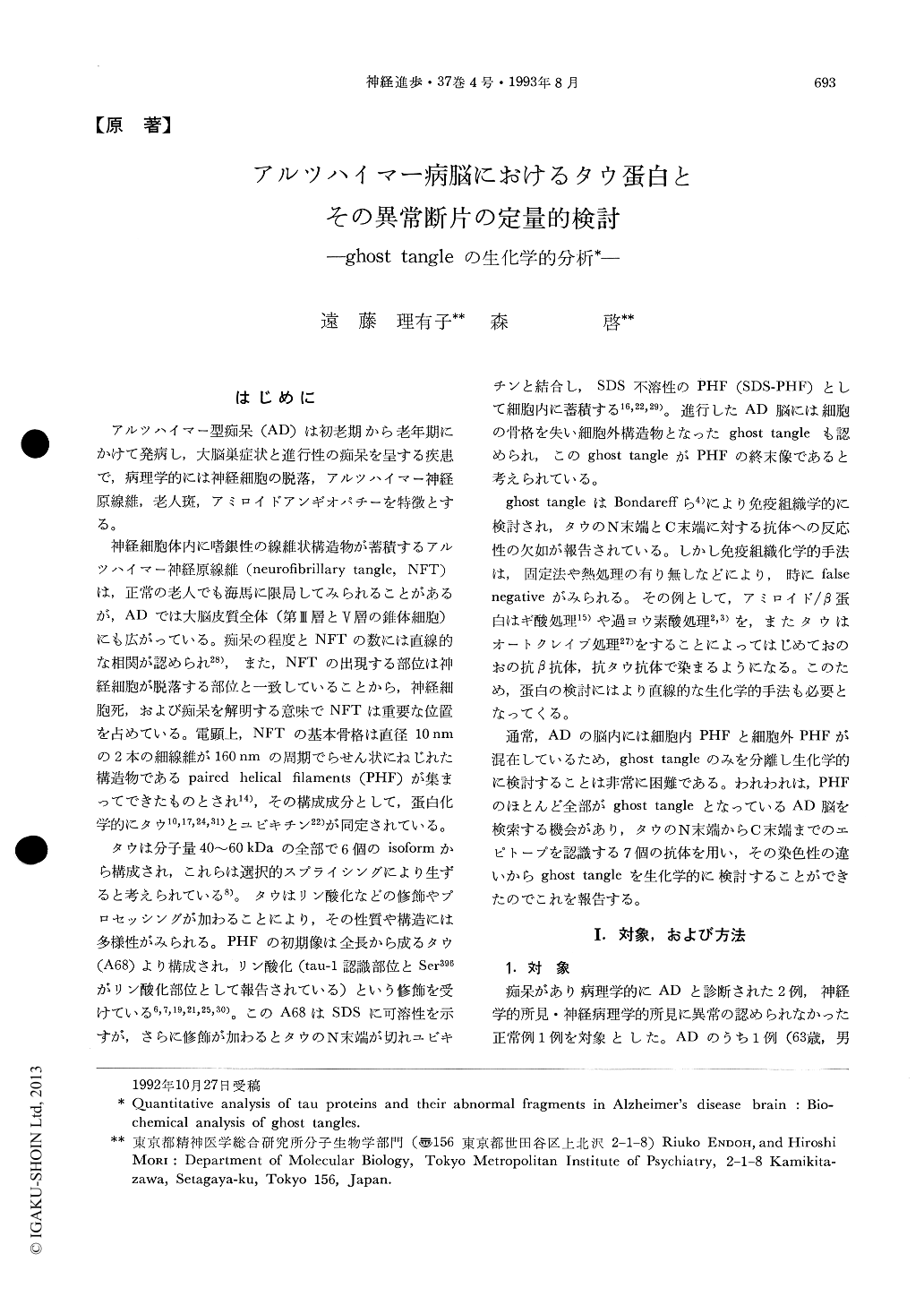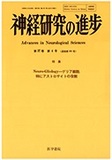Japanese
English
- 有料閲覧
- Abstract 文献概要
- 1ページ目 Look Inside
はじめに
アルツハイマー型痴呆(AD)は初老期から老年期にかけて発病し,大脳巣症状と進行性の痴呆を呈する疾患で,病理学的には神経細胞の脱落,アルツハイマー神経原線維,老人斑,アミロイドアンギオパチーを特徴とする。
神経細胞体内に嗜銀性の線維状構造物が蓄積するアルツハイマー神経原線維(neurofibrillary tangle,NFT)は,正常の老人でも海馬に限局してみられることがあるが,ADでは大脳皮質全体(第III層とV層の錐体細胞)にも広がっている。痴呆の程度とNFTの数には直線的な相関が認められ28),また,NFTの出現する部位は神経細胞が脱落する部位と一致していることから,神経細胞死,および痴呆を解明する意味でNFTは重要な位置を占めている。電顕上,NFTの基本骨格は直径10nmの2本の細線維が160nmの周期でらせん状にねじれた構造物であるpaired helical filaments(PHF)が集まってできたものとされ14),その構成成分として,蛋白化学的にタウ10,17,24,31)とユビキチン22)が同定されている。
Using seven independent antibodies against the amino terminal to the carboxyl terminal sequence of tau, we biochemically analyzed and compared the neuropathogenesis of a control case, typical Alzheimer's disease, and advanced Alzheimer's disease with senile plaques and virtually the sole of ghost tangles without intracellular neurofibrillary tangles, from the viewpoint of abnormal processing on tau, the major constituent of paired helical filaments. With the progression of neuropathological alteration, tau proteins were abnormally phosphorylated to be A68 then processed to be C48 and finally to be the smear PHF (SDS-PHF).

Copyright © 1993, Igaku-Shoin Ltd. All rights reserved.


